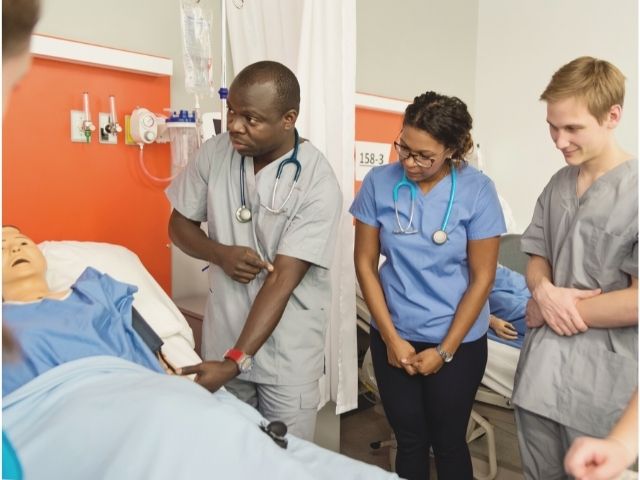Teaching the Adult Learner: What it Takes
Patience and Compassion
As with any student, adult learners need to be respected and given the freedom to explore options available to them for returning to school.
Clinical nurse instructors should get to know them using their background and life experiences in teaching and learning.
Meet the adult learner at their level, whether that be top of the class, in the middle, or at the bottom – start where they are comfortable, and then move forward from there.
Constructive feedback should always be the rule. Tearing down an adult student can cause even more damage to their esteem.
Being positive and encouraging gives them a better outlook on the future and how they can bring their A-game to class.
At first, learning new skills can be uncomfortable to the adult learner. As the clinical nurse educator, it is essential to always have patience and compassion.
Compassionate instructors will find the adult confiding in them or asking questions as they become more comfortable in participating in class.
Creativity and Openness to Try Things
Some adults find they need to relearn how to think when returning to school.
As students, we learn something and then use it for the upcoming test. As an adult, when we learn something, we try to apply it to our lives or our jobs to get a better understanding and to retain the information. When information is relevant to the adult student, they better retain and apply it as they will have a deeper understanding.
Additionally, working in teams can facilitate learning. Everyone brings something to the table in a team, and one student may be able to better explain the topic than the instructor.
It helps to have someone who is learning the same material explain how they understand or interpret it. Different viewpoints are helpful when trying to assimilate new information.
Visitors in the classroom present unique learning opportunities.
These speakers can address current information or talk about their career goals and how they met them. They can speak of barriers and other issues to help those still on the fence realize that goals can be met, it just takes patience and hard work.
After their presentation, they can have a question-and-answer session to catch all of those questions about the information and/or themselves.
Asking Questions
Another way to get the student talking is to ask open-ended questions!
The learner can explain their thinking or why they picked a particular answer.
In turn, this may help get a discussion going that will drive the lesson home. Just asking a yes/no question doesn’t leave much room for discussion, and it will not help retention of the material.










